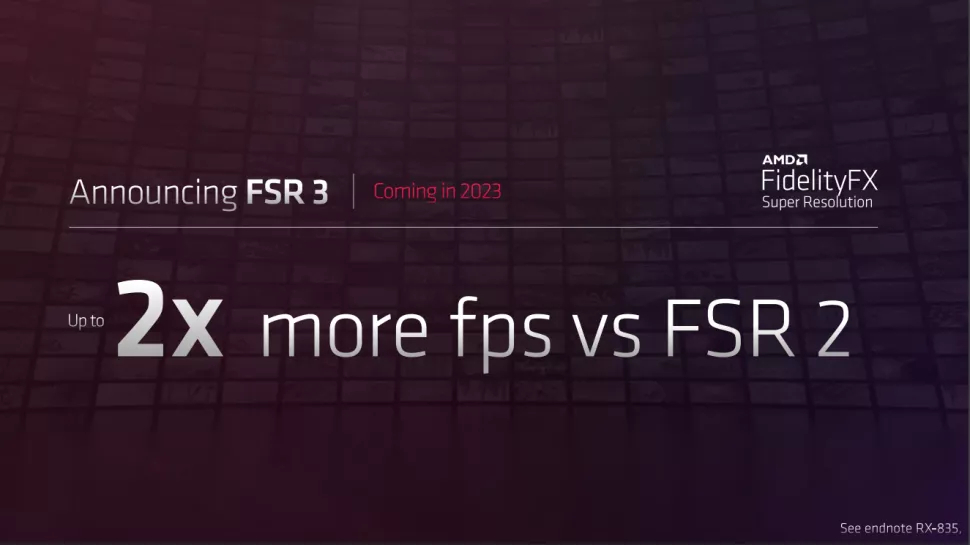During the Radeon 7000 launch, AMD announced the arrival of a new version of Fidelity FX Super Resolution upscaling, FSR3, which will launch in 2023. The updated version will incorporate Fluid Motion Frames that will double frames per second (fps).
AMD general manager Scott Herkelman acknowledged during the event that Fluid Motion Frames tech is similar in purpose to Nivida’s DLSS Frame Generation, but not in process. AMD showcased a demo of this tech using Unreal Engine 5, in which the frame rate jumped from 60fps with FSR 2 to 112fps with FSR 3. There isn’t a lot of information out there as of yet on how FSR 3 will work in detail, but we expect to hear more from the company in the coming weeks.
There are currently 216 games that support FSR in some way, and that number is expected to grow steadily according to AMD. This is great news for gamers as the technology is open to owners of GPUs from all major manufacturers, not just AMD users. So owners of say an Nvidia GeForce RTX 1080 and above can take advantage of FRS 2 to improve their frame rates, so it would make sense to assume that many of those cards will also have FRS 3 support. Older GPUs are included in the list of compatible graphics cards, although with the reminder from AMD that you may not get a significant performance change when using FSR 2 on cards like the GTX 970 or RX 480.

Gimme that sweet sweet FPS
More open technology is always very exciting to us, and rather than horde its performance-enhancing tech and attach it to only its hardware, AMD has made it available to almost all PC gaming consumers so they can enjoy higher frame rates and advanced graphical effects without having to splash out on new hardware. If you want to be a bit sceptical you could argue it’s part of a marketing ploy to convince us that AMD is on the consumer’s side, but this is still a very welcome difference from Nvidia’s more proprietary approach.
On a more optimistic note, FRS 3 makes better gaming more accessible for many people. Those of us who hold onto our beloved, older GPUs that can’t afford an upgrade just yet, or those who have low-powered machines, will still be able to enjoy their games on higher settings




